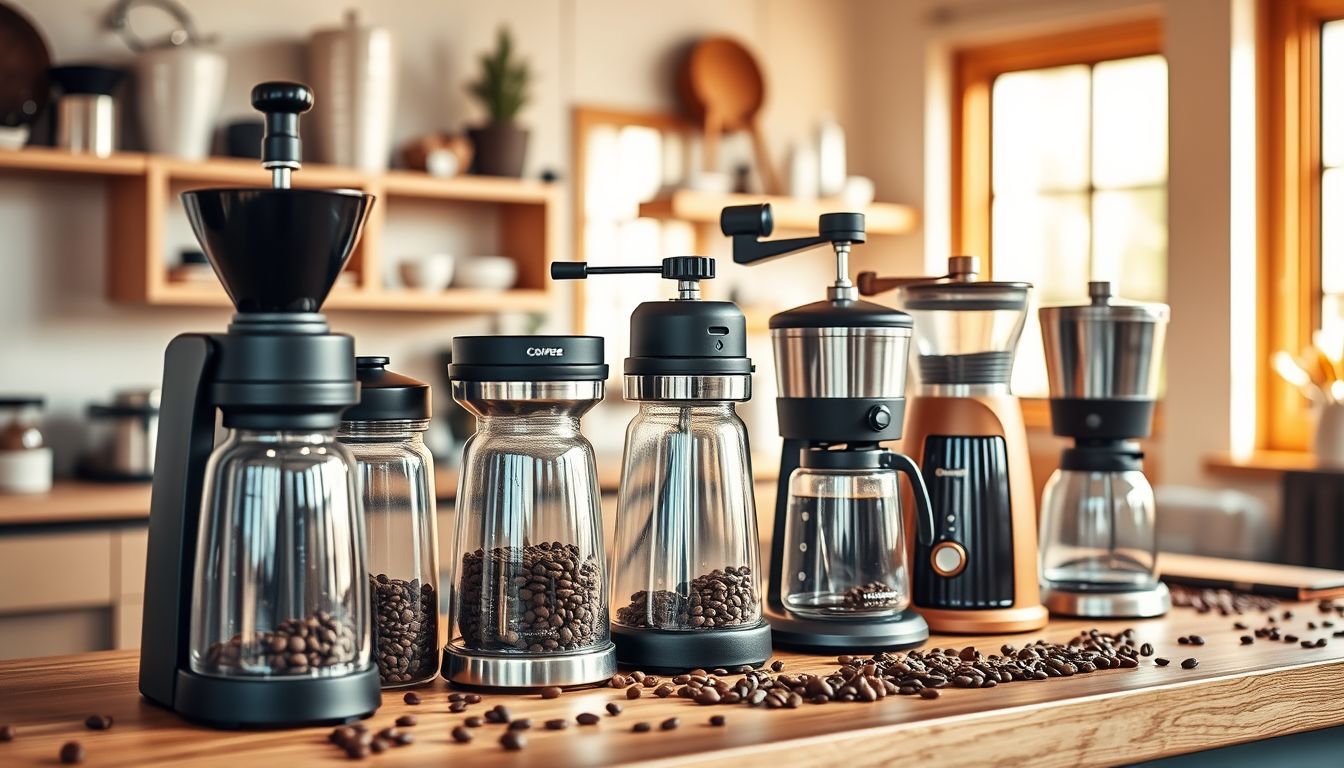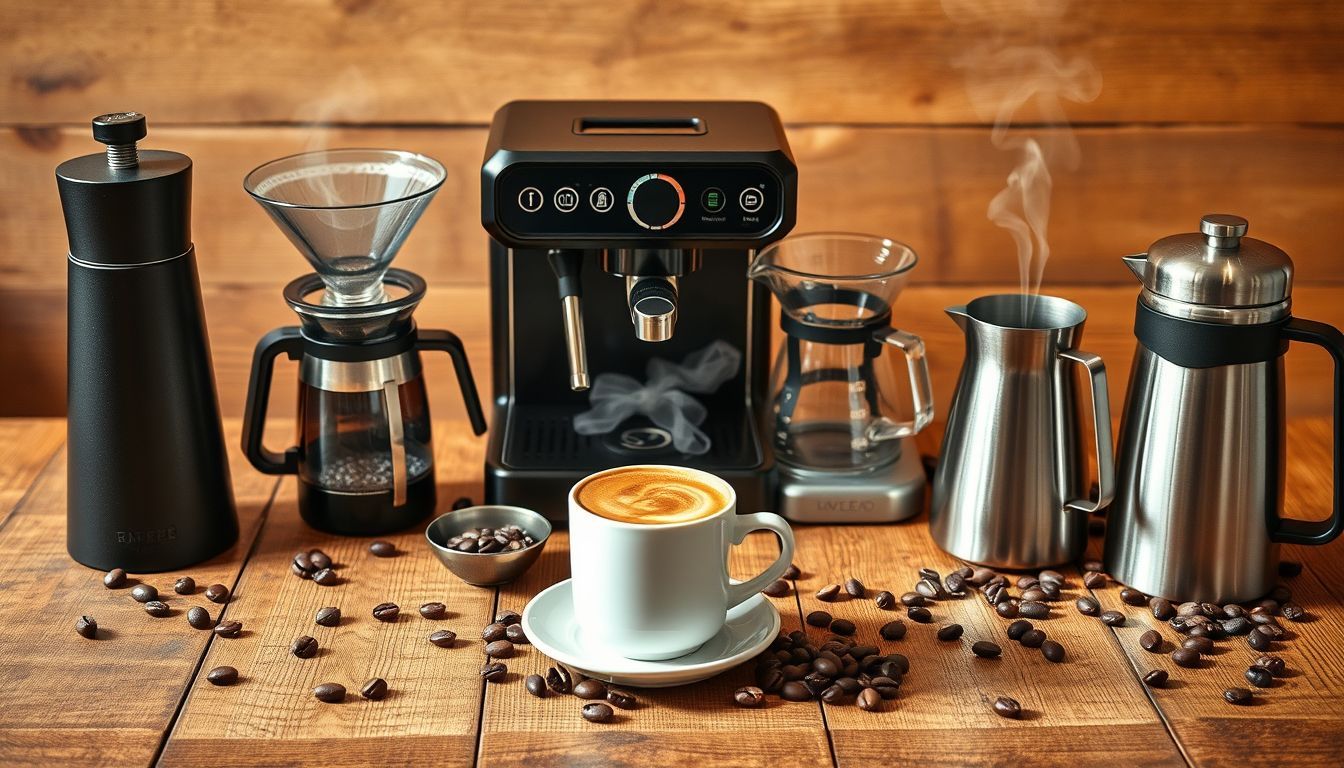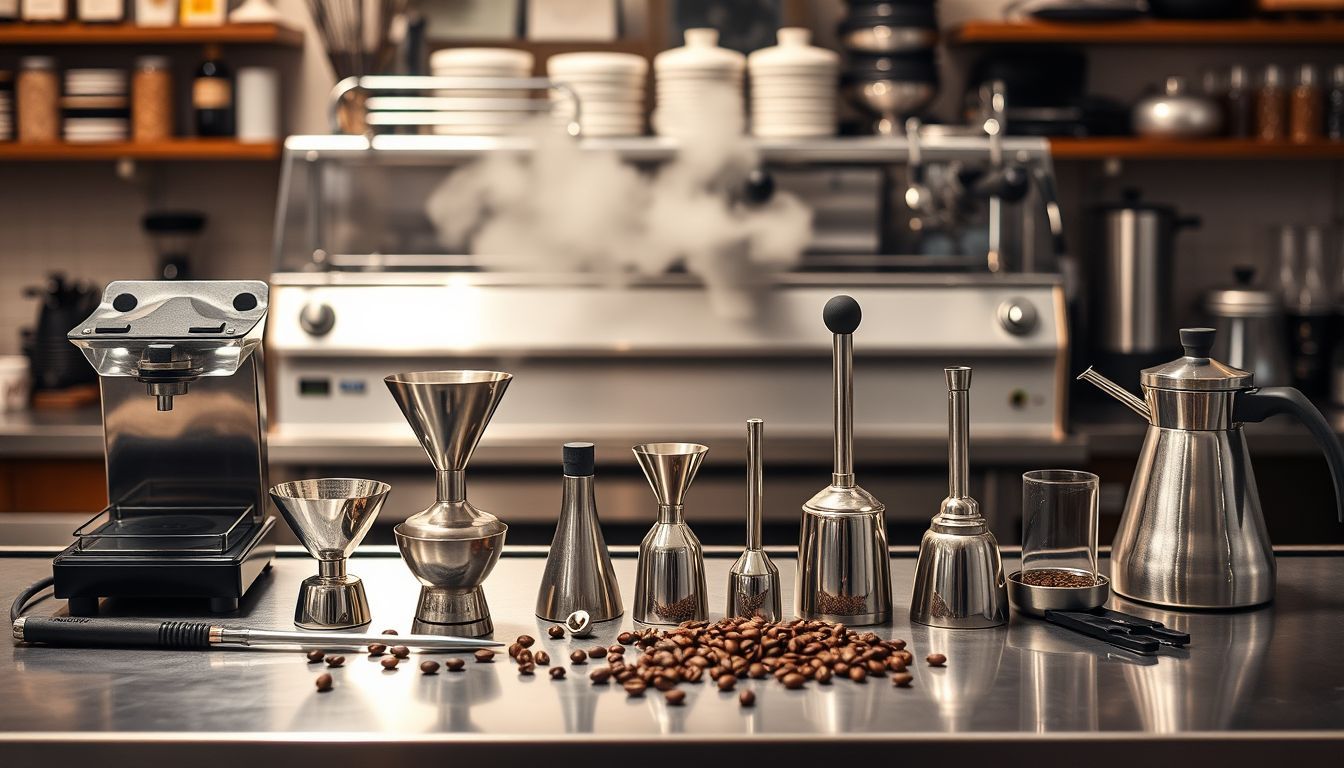The Best Coffee Grinders for Every Budget and Brewing Method
From budget blade grinders to precision burr mills, discover which grinder will unlock your coffee's true potential. Your brewing method deserves the perfect particle size.

Amazon Affiliate Disclosure
This post contains affiliate links. If you purchase through these links, we may earn a small commission at no additional cost to you.
The Best Coffee Grinders for Every Budget and Brewing Method
In my fifteen years of coffee research, I've witnessed countless brewing disasters that could have been prevented with one simple upgrade: a proper grinder. The harsh truth? Your $200 espresso machine paired with pre-ground coffee will produce inferior results compared to a $50 pour-over setup with freshly ground beans from a quality grinder.
Today, we're diving deep into the world of coffee grinders—from budget-friendly options that won't break the bank to precision instruments that rival laboratory equipment. Whether you're brewing espresso, French press, or anything in between, I'll help you find the grinder that matches both your brewing method and your wallet.
Why Your Grinder Matters More Than You Think
Before we explore specific recommendations, let's establish why grind quality is the foundation of exceptional coffee. When coffee beans are ground, we're creating surface area for water to extract soluble compounds. The uniformity and size of these particles directly control extraction rate and, ultimately, flavor.
The Science of Particle Distribution
A quality grinder produces a narrow particle size distribution—meaning most particles are roughly the same size. Poor grinders create a wide distribution with both fine dust and large boulders. The result? Simultaneous over-extraction (bitter compounds from fines) and under-extraction (sour notes from large particles).
This is why I always tell my students: invest in your grinder first, everything else second.
Understanding Grinder Types
Blade Grinders: The Budget Reality
Blade grinders use spinning blades to chop coffee beans, similar to a food processor. While coffee purists often dismiss them entirely, they serve a purpose in specific scenarios.
Pros:
- Extremely affordable ($15-40)
- Compact and portable
- Easy to clean
Cons:
- Inconsistent particle size
- Heat generation during grinding
- No precise size control
Best for: French press, cold brew, or emergency situations when freshly ground coffee beats pre-ground alternatives.
Burr Grinders: The Gold Standard
Burr grinders crush beans between two abrasive surfaces (burrs), producing consistent particle sizes. They come in two varieties: flat burrs and conical burrs.
Flat Burr Grinders:
- Produce extremely uniform particles
- Excel at espresso grinding
- Generally more expensive
- Can retain more grounds
Conical Burr Grinders:
- Versatile across brewing methods
- Less heat generation
- Better for oily beans
- Easier to clean
Budget-Friendly Champions ($25-100)
Hario Mini Mill Slim ($35)
This manual grinder punches well above its weight class. The ceramic conical burrs produce surprisingly consistent results, especially for pour-over methods. Yes, grinding 20 grams takes about two minutes of hand-cranking, but the particle uniformity rivals grinders costing three times more.
Best for: Pour-over, AeroPress, French press
Avoid for: Espresso (too inconsistent at fine settings)
Cuisinart DBM-8 ($50)
For those requiring electric convenience on a budget, the Cuisinart DBM-8 Burr Grinder offers decent burr grinding without the premium price. While not perfect, it's a significant upgrade from blade grinders and handles medium grinds admirably.
Best for: Drip coffee, pour-over
Limitations: Struggles with espresso-fine grinds
Timemore C2 ($65)
This manual grinder represents exceptional value engineering. The steel conical burrs, improved from earlier Timemore models, deliver consistent results across a wide range of grind sizes. The ergonomic design makes grinding less of a chore.
Best for: All brewing methods except espresso
Pro tip: Upgrade to the C3 ($85) if espresso is in your future
Grab the Timemore Chestnut C2 Manual Coffee Grinder for a true budget champion.
JavaPresse Manual Grinder ($35)
If you prefer an all-metal option, the JavaPresse Manual Coffee Grinder offers 18 grind settings in a sleek stainless-steel body. It’s perfect for travel or small kitchens.
Mid-Range Performers ($100-300)
Baratza Encore ($150)
The Encore has earned its reputation as the gateway drug to serious coffee grinding. Its 40 mm conical burrs produce consistent results for most brewing methods, while the simple interface and robust build quality make it virtually foolproof.
Strengths:
- Excellent customer support
- User-replaceable parts
- Consistent medium to coarse grinds
Limitations: Not ideal for espresso, some retention issues
OXO Brew Conical Burr Grinder ($200)
Oxo's entry into coffee grinding impressed me with its attention to detail. The one-touch timer, anti-static grounds container, and surprisingly good grind consistency make this a compelling choice for drip coffee enthusiasts.
Discover it on Amazon: OXO Brew Conical Burr Grinder
Baratza Virtuoso+ ($250)
Stepping up from the Encore, the Virtuoso+ offers improved burrs, digital timer, and better overall build quality. It's the sweet spot for serious home brewers who aren't quite ready for prosumer territory.
Best for: Pour-over, drip, French press
Upgrade consideration: The improved burr set makes a noticeable difference
Espresso-Focused Options ($200-500)
Baratza Sette 270 ($350)
Designed specifically for espresso, the Sette 270's innovative straight-through grinding path minimizes retention while its macro/micro adjustment system enables precise dialing-in. The grind quality rivals much more expensive options.
Strengths:
- Exceptional espresso performance
- Low retention
- Fast grinding
Considerations: Louder than most grinders, not ideal for coarse grinds
Eureka Mignon Specialita ($400)
This Italian-made grinder combines compact design with serious performance. The 55 mm flat burrs produce excellent espresso grinds, while the silent motor won't wake the household during morning routines.
Best for: Espresso, moka pot
Standout feature: Remarkably quiet operation
Premium Performers ($500+)
Fellow Ode ($300) + SSP Burrs ($200)
The Ode, designed for filter coffee, becomes a precision instrument when upgraded with SSP burrs. This combination produces some of the most uniform grinds I've tested for pour-over methods.
Best for: Pour-over, drip coffee
Investment note: The burr upgrade is essential for optimal performance
Baratza Forte BG ($900)
With its commercial-grade 54 mm ceramic burrs and precise controls, the Forte BG delivers laboratory-level consistency. It's overkill for most home users but perfect for serious enthusiasts or small cafes.
Best for: All brewing methods
Justification: When grind quality is paramount
Mahlkönig EK43 ($2,500+)
The EK43 redefined what's possible in coffee grinding. Originally designed for spice grinding, its massive 98 mm burrs produce incredibly uniform particles across all grind sizes. It's the grinder that launched a thousand specialty coffee shops.
Best for: Everything (when budget allows)
Reality check: Serious overkill for home use
Matching Grinders to Brewing Methods
French Press & Cold Brew
Grind requirement: Coarse, uniform
Recommendations: Hario Mini Mill Slim, Baratza Encore, any burr grinder
Avoid: Blade grinders (too many fines)
Pour-Over (V60, Chemex, Kalita)
Grind requirement: Medium-fine, very uniform
Recommendations: Timemore C2, Baratza Virtuoso+, Fellow Ode
Key factor: Particle uniformity matters more than absolute size
For the ultimate pour-over setup, don't forget your dripper and filters. The classic Hario V60 Ceramic Coffee Dripper and a pack of quality filters are must-haves.
Espresso
Grind requirement: Fine, adjustable, low retention
Recommendations: Baratza Sette 270, Eureka Mignon Specialita
Critical factor: Stepless adjustment capability
AeroPress
Grind requirement: Medium-fine, forgiving
Recommendations: Almost any burr grinder works well
Advantage: AeroPress is remarkably forgiving of grind inconsistencies
Pair it with the beloved AeroPress Original Coffee Press for a truly portable experience.
Making Your Decision
Choosing the right grinder requires honest assessment of your brewing habits, budget, and quality expectations. Here's my decision framework:
- Identify your primary brewing method
- Set a realistic budget (remember: grinder first, everything else second)
- Consider convenience factors (manual vs. electric, noise levels, counter space)
- Plan for growth (will you explore espresso eventually?)
My Top Picks by Category
- Best Overall Value: Timemore C2
- Best Electric Under $200: Baratza Encore
- Best for Espresso: Baratza Sette 270
- Best Premium Filter Grinder: Fellow Ode with SSP burrs
- Best No-Compromise Option: Mahlkönig EK43
Conclusion: Your Grinder Journey Starts Here
After testing hundreds of grinders across every price point, I've learned that the "best" grinder is the one that matches your brewing style, budget, and quality expectations. A $65 Timemore C2 will transform your morning pour-over more dramatically than upgrading from a $100 to $200 brewing device.
Remember: coffee is a journey, not a destination. Start with a grinder that meets your current needs but leaves room for growth. Whether that's a humble Hario Mini Mill or a precision Eureka Mignon, the key is taking that first step toward freshly ground coffee.
Your taste buds—and your morning routine—will thank you.
What's your current grinder setup? Share your experiences and questions in the comments below. I read every response and love helping fellow coffee enthusiasts optimize their brewing.

Marcus Thorne
As a journalist, I learned that the truth is often buried under layers of misinformation and time. As a novelist, I get to do the digging. Whether it's a forgotten event from the Cold War or a present-day conspiracy, I build my stories on a foundation of fact, inviting you to question what you think you know.


